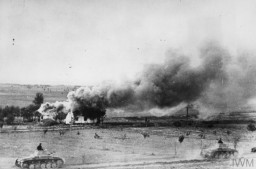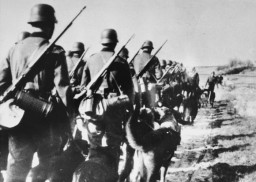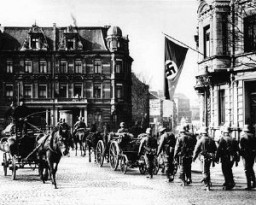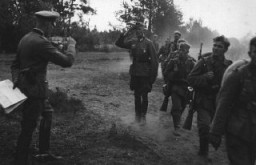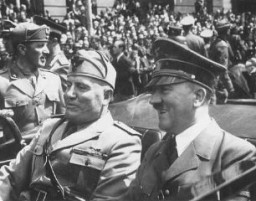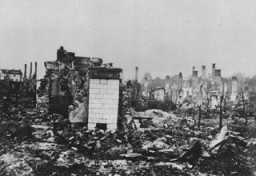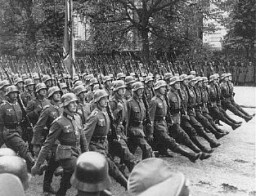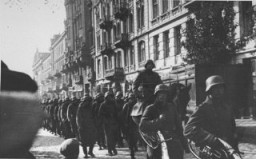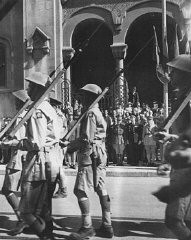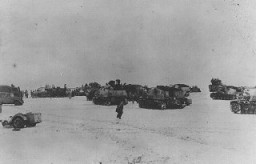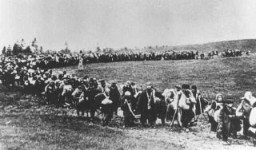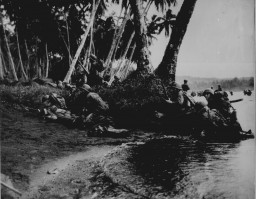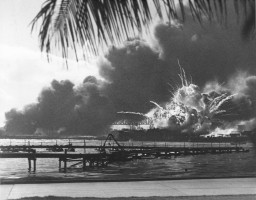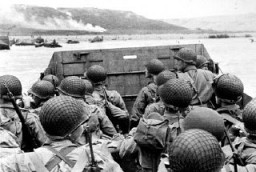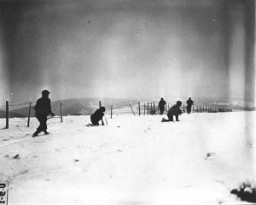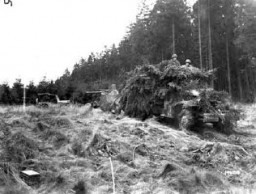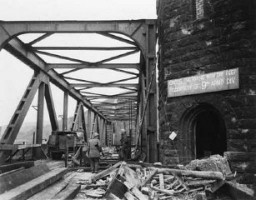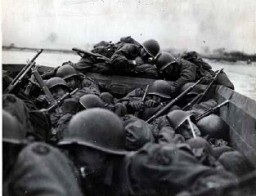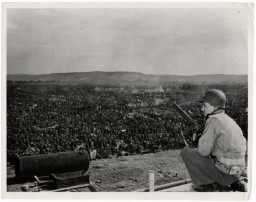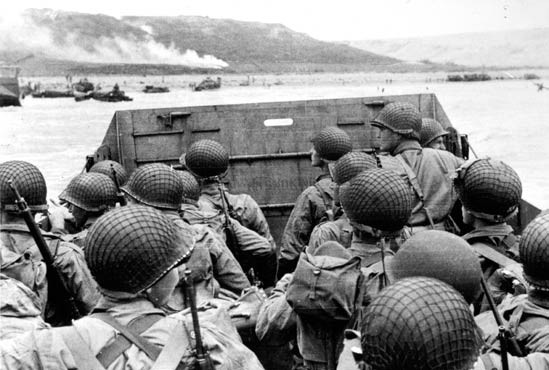
D-Day
The D-Day invasion of Normandy, France, on June 6, 1944, was one of the most important military operations to the western Allies’ success during World War II. By the end of June, more than 850,000 US, British, and Canadian troops had come ashore on the beaches of Normandy.
-
1
Operation Overlord—commonly known as “D-Day”—was the largest amphibious invasion in history, deploying more than 160,000 Allied troops on air, land, and sea.
-
2
D-Day marked the beginning of the end of German rule in France. Two and a half months later, Paris was liberated.
-
3
As important as D-Day was to Allied victory, it came too late to change the course of the Holocaust. As the Allies were coming ashore, Hungarian Jews—the largest remaining community of Jews in occupied Europe—were being deported and murdered.
After the German conquest of France in 1940, the opening of a second front in western Europe was a major aim of Allied strategy during World War II. Before the summer of 1944, the Soviet Red Army carried on the bulk of the Allied fighting in Europe. Western Allied troops, however, did not gain a footing on the European continent until July 1943 with the invasion of Sicily.
But it was the Allied landing in northern France in June of 1944 that ultimately ensured Allied victory over the Nazis.
On June 6 of that year, under the code name Operation “Overlord,” US, British, and Canadian troops crossed the English Channel and landed on the beaches of Normandy, France. Since then, June 6, 1944, has been known in World War II history as “D-Day.”
Operation "Overlord"
Operation “Overlord” was organized under the overall command of US General Dwight D. Eisenhower. On the ground, it was commanded by British General Bernard Montgomery. During the operation, Allied troops landed on five beaches on the coast of Normandy. The beaches were code named: Omaha, Gold, Juno, Sword, and Utah. On the night before the amphibious landings, more than 23,000 US, British, and Canadian paratroopers landed in France behind the German defensive lines by parachute and glider. The invasion forces numbered about 175,000 Allied troops and 50,000 vehicles. Some 5,000 naval craft and more than 11,500 aircraft supported the initial invasion.
At first, under the overall command of Field Marshal Erwin Rommel, the Germans had held the advantage in battle positioning. They had deployed five infantry divisions, one airborne division, and one tank division along the Normandy coast. However, the Allies had an overwhelming advantage in naval and air power. On D-Day alone, the Allies flew 14,000 sorties. In contrast, the German air force managed only 500 sorties. Moreover, a successful Allied deception plan had led the Germans to believe the point of the attack would be further north and east on the coast near Calais and the Belgian border. Deceived, the Germans moved only slowly to reinforce the Normandy defenses after the initial landing.
"'This is D-Day,’ the BBC announced at twelve. ‘This is the day.’ The invasion has begun...Is this really the beginning of the long-awaited liberation? The liberation we’ve all talked so much about, which still seems too good, too much of a fairy tale ever to come true? Will this year, 1944, bring us victory? We don’t know yet. But where there’s hope, there’s life. It fills us with fresh courage and makes us strong again.” —Anne Frank, diary entry June 6, 1944
By nightfall of June 6, 1944, some 100,000 Allied servicemen had come ashore. Despite Allied superiority, the Germans contained Allied troops in their slowly expanding beachhead for six weeks. The US 1st and 29th Infantry Divisions made the most difficult landing on Omaha Beach. Stiff German resistance here caused over 3,000 casualties before the Allied troops could establish their positions by the end of the first day. On D-Day itself, Allied troops suffered more than 10,000 casualties, with 4,400 confirmed dead. Specifically, British and Canadian forces suffered around 3,700 casualties; and US forces suffered about 6,600 casualties. German forces lost between 4,000 and 9,000 men.
D-Day: Historical Film Footage
On D-Day itself, the Allies landed 11 divisions on the French coast. Initially, they failed to reach their planned objective of linking the beachheads or driving inland to a distance of nine miles. On June 11, however, Allied troops overcame German resistance. They united the invasion beaches into one large beachhead.
On July 25, 1944, Allied troops broke out of the Normandy beachhead near the town of St. Lo. They began to pour into northern France. By mid-August, Allied troops encircled and destroyed much of the German army in Normandy in the Falaise pocket. Spearheaded by General George Patton's Third Army, the Allies then raced across France. On August 25, Free French forces liberated Paris with Allied support. On September 11, 1944, US troops arrived in Luxembourg, which at the time was annexed to the German Reich. This meant that US troops had effectively crossed the German frontier.
D-Day and the Holocaust
D-Day was key to the overall Allied victory in World War II. However, this victory came too late in the war to make a significant difference in the fate of Europe’s Jews. More than five million had already been killed by D-Day.
As Allied troops stormed ashore in Northern France, the Nazis were deporting and murdering Hungarian Jews on a massive scale. The Jews of Hungary were the largest remaining Jewish community in occupied Europe at this time.
Despite the Allied victory during Operation “Overlord,” Jews would continue to be murdered right up until the end of the war.
Series: World War II
Series: Allied Military Advances in the West
Switch Series
Critical Thinking Questions
- Genocide often happens under cover of war. What was the relationship between the progress of the war and the mass murder of Europe’s Jews?
- How many Jews had been murdered by D-Day? What camps and killing centers were still in operation?
- When did Allied forces in the west begin to encounter concentration camps? When did Soviet forces encounter camps in Poland?
